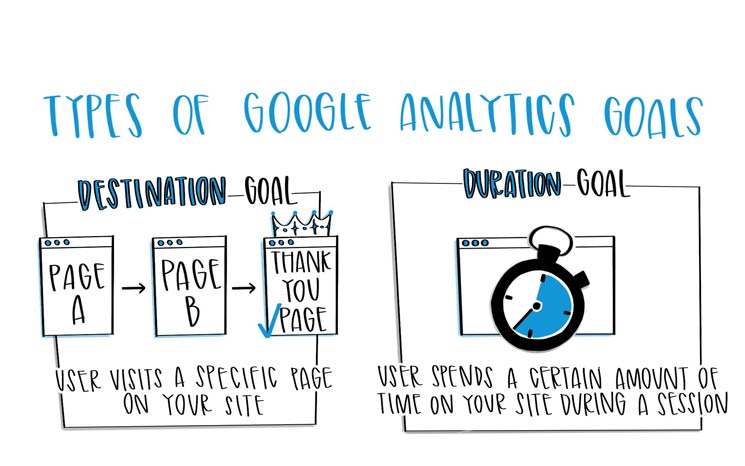What Data Is Google Analytics Goals Unable to Track: A Full Guide
What Data Is Google Analytics Goals Unable to Track: A Full Guide
Blog Article
Unveiling the Blind Destinations: Recognizing What Google Analytics Goals Can not Determine
In the realm of digital analytics, Google Analytics stands as an effective device for monitoring and evaluating online user communications. Understanding what Google Analytics goals can not measure is vital for acquiring a comprehensive view of customer actions and interaction.
User Habits on External Operatings Systems
Comprehending just how individuals interact on external platforms is vital for maximizing on the internet strategies. External platforms, such as social media sites networks, referral websites, and on-line discussion forums, play a considerable duty in driving web traffic to a firm's website. By assessing user habits on these platforms, businesses can acquire valuable insights into the efficiency of their advertising and marketing efforts and the choices of their target market.
One trick facet of user habits on outside systems is the reference resource. By tracking where the customers are originating from, companies can identify which systems are driving one of the most traffic to their site. This info can help business allot their sources extra effectively, concentrating on the platforms that generate the very best outcomes.

Offline Communications and conversions
Assessing customer habits on external platforms provides beneficial understandings into online methods; nevertheless, taking into consideration offline conversions and communications is just as vital for a detailed understanding of a firm's overall efficiency. While Google Analytics stands out at tracking on-line communications, it drops short in capturing the complete consumer journey that typically consists of offline touchpoints. Offline conversions, such as in-store acquisitions or phone queries, play a substantial role in several businesses' success. Neglecting these communications can result in an altered sight of the performance of marketing campaigns and general service efficiency.

Acknowledgment Beyond Last Click
When diving right into the realm of digital advertising analytics, it comes to be necessary to look past the single touchpoint of the last click for a much more comprehensive understanding of attribution. While Google Analytics offers useful understandings right into customer actions, counting entirely on last-click attribution can be limiting - what data is google analytics goals unable to track. Attribution models that go beyond the last click use an extra nuanced sight of the consumer trip, thinking about all the touchpoints that lead to a conversion
Acknowledgment past the last click allows marketing experts to appoint credit rating to numerous interactions along the conversion course, offering a clearer image of the performance of various advertising channels. By discovering multi-touch acknowledgment designs such as linear, time degeneration, or position-based attribution, companies can much better designate their advertising spending plans and enhance their techniques for maximum impact.
Comprehending the impact of each touchpoint in the conversion process is crucial for making educated choices and optimizing ROI. By accepting acknowledgment beyond the last click, services can gain deeper insights into client behavior and tailor their advertising and marketing initiatives a lot more effectively.
Cross-Device and Cross-Browser Monitoring

Likewise, cross-browser monitoring enhances cross-device monitoring by recording user actions as they switch between different web internet browsers. Recognizing just how customers communicate with internet sites on numerous internet browsers can aid marketing professionals maximize their on-line experiences to make sure uniformity and capability throughout various systems.
Qualitative Information and Individual Intent
Comprehending individual intent with qualitative data evaluation is essential for developing targeted digital marketing strategies that resonate with the demands and choices of the target audience. Qualitative data offers insights into the 'why' behind customer activities, clarifying inspirations, feelings, and preferences that measurable information alone can not catch. By evaluating user feedback, remarks, and interactions, online marketers can additional resources discover beneficial details regarding individual intent, allowing them to customize their messaging, content, and offerings to better straighten with what their audience is seeking.
Qualitative information likewise helps in recognizing the context in which customers engage with a site or application. This contextual understanding allows you can find out more online marketers to create even more tailored and pertinent experiences, inevitably driving higher involvement and conversion rates. By diving into customer intent via qualitative data evaluation, businesses can get a deeper understanding of their target market, causing extra efficient advertising and marketing techniques that fulfill customers' assumptions and requirements.
Conclusion
In verdict, Google Analytics goals have restrictions in gauging user actions on external systems, offline conversions, attribution beyond last click, cross-device and cross-browser tracking, and qualitative information associated with individual intent. what data is google analytics goals unable to track. It is necessary for companies to be conscious of these dead spots in order to supplement their data analysis with various other devices and methods to acquire a much more comprehensive understanding of their audience and boost their total digital advertising approaches
By analyzing user habits on these systems, businesses can get beneficial understandings right into the effectiveness of their advertising efforts and the preferences of their target audience.
Examining user habits on outside systems supplies beneficial understandings right into go now on-line strategies; nevertheless, considering offline conversions and interactions is equally necessary for a thorough understanding of a firm's total efficiency.In electronic marketing analytics, moving beyond last-click attribution to explore cross-device and cross-browser tracking is essential for gaining a holistic understanding of user communications throughout different systems and devices. By analyzing customer comments, comments, and communications, marketing professionals can discover useful info about customer intent, permitting them to tailor their messaging, material, and offerings to better line up with what their audience is looking for.
By diving into user intent via qualitative information analysis, companies can gain a much deeper understanding of their target audience, leading to a lot more efficient marketing approaches that satisfy users' demands and expectations.
Report this page